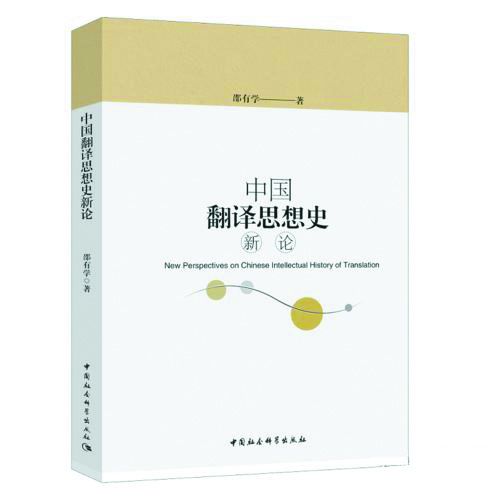Building intellectual history of translation

New Perspectives on Chinese Intellectual History of Translation
Excavating and combing through the history of thought in a discipline is an essential part of its process of maturation, thus the research value of the history of thought in translation shouldn’t be ignored.
New Perspectives on Chinese Intellectual History of Translation proposes an event-centered construction method of translation thought history.
The book’s introduction suggests that the study of translation thought originated from the Edo period (1603-1868) in Japan. The monograph is divided into six topics: Chinese translation originating from witchcraft; communicating with gods; divine phenomena in the translation of early Buddhist scriptures; ancient buddhist scripture translation thought; translation thought in the transitional era of the late Qing Dynasty; Lin Shu’s translation of “faithless” from the perspective of the poly-system theory; and finally poetry translation thoughts and the evolution of Chinese poetics. The last part explores the reasons why China failed to cultivate a flourishing school of translation theory and translation studies despite its long history of translation practice. This was attributed to the instrumental orientation of translation, the pragmatic rationality of Confucianism and cultural centrism.
The book strictly defines the core concepts of “generalized translation,” “translation thinking” and “translation theory.” The author examines the origin of the study of translation and the present situation of the study of the history of translation in China, and divides the study of translation in China into three stages: from the germination period of 1979-1999 to the development period of 2000-2009 and from 2010 to the present, the flourishing period.
The book points out that translation can be traced back to ancient times of witchcraft. The way that witches communicated with heaven and the earth god was the original form of translation. Since “wizard thought and culture of ancient times should be included in the research field of the history of Chinese social thought,” it is necessary to incorporate them into the research field of the history of Chinese translation thought.
The book describes several forms of ancient Buddhist scripture translation and the role of miraculous phenomena in the spread of Buddhism. In addition, the author proposes that the history of Chinese translation thought should be examined from two dimensions: official and civil.
The author achieves a sound argument in the introduction. But because of the limitations of the length of the article, there are only six chapters in the monograph, and the continuity of the history of thought needs to be improved.
(edited by CHEN ALONG)
